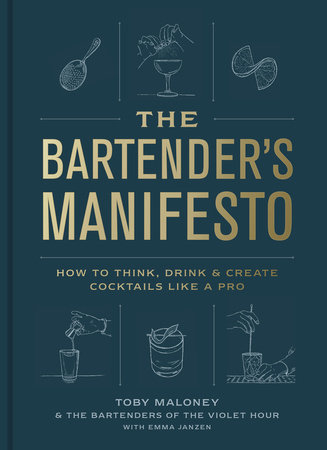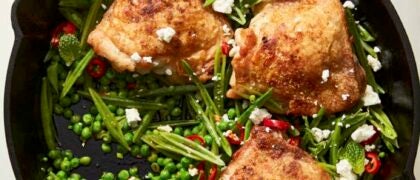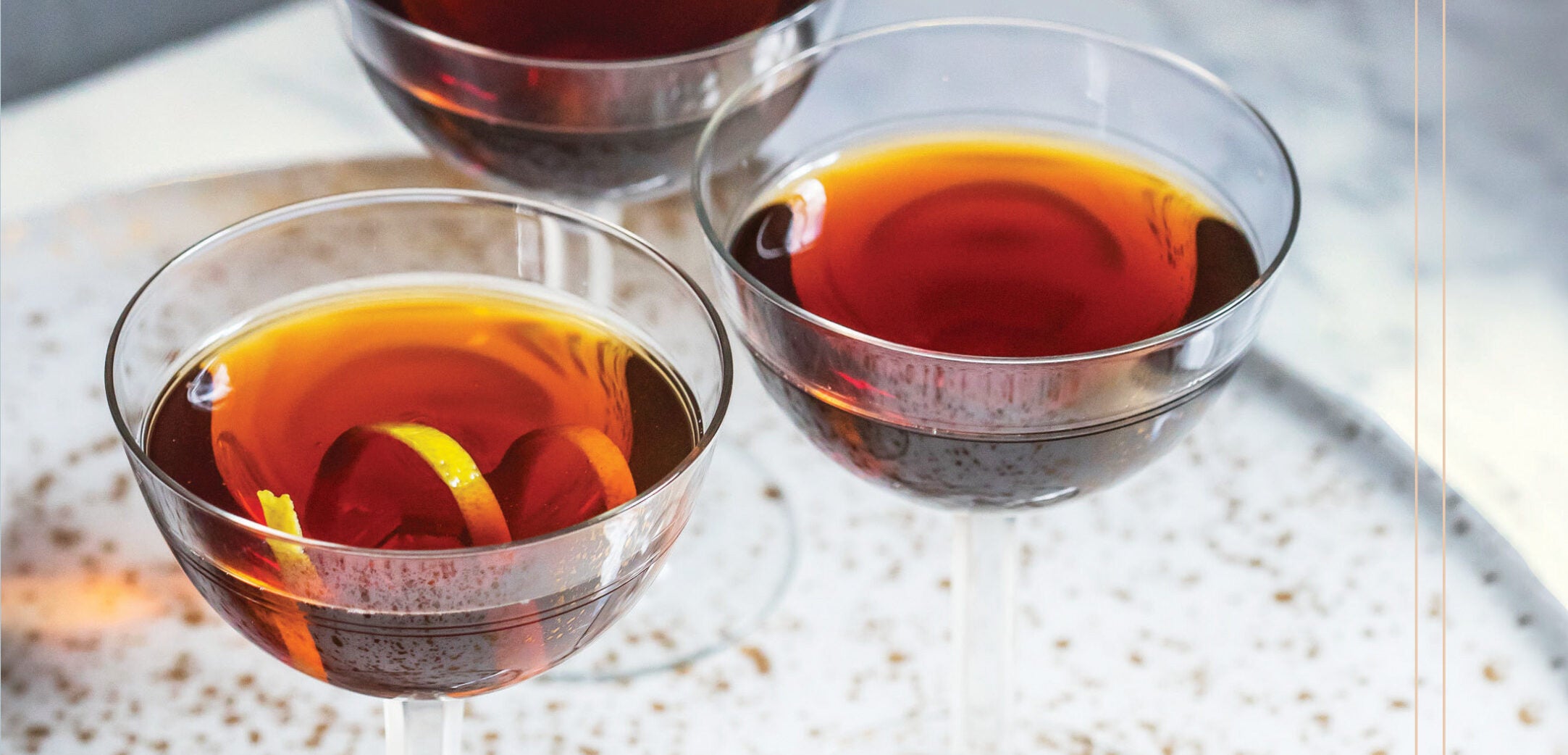IntroductionWelcome to The Violet Hour. My name is Toby Maloney. I’m a bartender and I f***ing love my job.
For reasons I can’t begin to understand, not everyone respects the title of bartender. For most of my career, people thought bartending was a stopgap, something one did while waiting for their life to really start. But in those golden days that we bartenders dream about, the tavern was the focus of the town and the bartender was at its center. That person was thought of highly for all the things they could do—recount jokes, introduce new friends, and listen to tales of woe with furrowed brow. They knew when to say something, when to hold back. Their skills were not limited to knowledge of beverage recipes, but encompassed charisma, character, and empathy. We bartenders still hearken back to the days when Jerry Thomas wore diamond pins and threw fire for an awed audience because we know there is so much more to the profession than just slinging drinks.
I tend the bar, I keep the bar; I keep things moving, I keep people satisfied. Not just for an evening, but for the many fruitful evenings in guests’ lives. On the nights it goes well, there is nothing else like it. Patrons sit gobsmacked and the air is afire with adulation, adrenaline, and Angostura. The chit and clack of the impact printer sets the pace, the mechanical hare just ahead of us greyhounds. Simple movements seem choreographed. The impromptu cocktail creation is just as good as you imagined it. You’re in sync with the other bartender, ducking just when their sledgehammer shaker is coming down, slipping straws and garnishes in passing drinks, requesting a bottle from the back bar with a nod.
Working a shift in a cocktail bar is like a ten-hour squash game in a dirty submarine* being battered against a rocky shoal. But it is worth every bruise and cut and pair of sticky boots, because when someone sips from that frosty glass and shivers or closes their eyes or curls their toes, I feel it, too. There is a heady combination of physicality, creativity, study, showing off, and camaraderie that keeps me coming back for more.
I’ve been in the service industry since I was eleven. I started as an underwater ceramic engineer,* but I’ve also cooked and prep-cooked, been a busboy and waited tables, worked the door, coat-checked, managed, bar-managed, and general-managed. I’ve owned bars and sold bars and ordered drinks in more bars than I can remember. I arrived in Chicago in the early ’90s road weary and broke. I bartended and worked in kitchens so I could have the flexibility to f*** off to Southeast Asia for hot weather, spicy food, and frigid beer every winter. Then I moved to New York City and lucked into the cocktail game early, earning my chops in venerable cocktail meccas like Milk & Honey, Flatiron, Freemans, and Pegu Club.
In the spring of 2007, I moved back to Chicago to open a cocktail bar across the street from Wicker Park, where at that time you were more likely to get mugged than get organic kale at a farmers’ market. I partnered with One Off Hospitality, a group that included Terry Alexander, Peter Garfield, and Donnie Madia, who had some of my favorite bars and restaurants under their umbrella.† There were many late nights assembling a place that would prove to be unlike any other in the city. A few days before opening, we went to one of the neighborhood’s finest dives, Phyllis’ Musical Inn, to vote on a name. We all tossed our ideas into a wet beer pitcher, pulled out streaky slips of paper, and read them out loud. “The Violet Hour” won by a nose over “Mother’s Ruin.”
“The Violet Hour” comes from the T. S. Eliot poem “The Waste Land” and from The Hour, a book by Bernard DeVoto. In his charming-yet-somewhat-curmudgeonly look at the art of imbibing, DeVoto described his perfect martini as 3.7 to 1, strained with a perforated, not coiled, strainer, and added that it must be consumed in an urban, not rural, setting. He was particular and persnickety, some of which we wanted to bring with us, some not so much. Either way, we did bring a very specific vision to the City of Broad Shoulders, and that pioneering cocktail bar ended up being exactly the seismic paradigm change we thought it would be.
Chicago hadn’t seen anything like it before. The Violet Hour was massive, warehouse-size, like five times the physical size of Milk & Honey. Together with inventive architect and interior designer Thomas Schlesser, we turned the space into a surreal wonderland, a dark utopia the color of a frozen lake with flickering candlelight and a huge back bar. And the curtains—the curtains! Made of thick, weighted velvet, they suggested an opulence and a grandeur the city’s cocktail scene hadn’t offered in decades. A huge bonus was how the fireplace glowed on the far wall, promising succor with a come-hither wink on freezing winter nights.
We hired a staff that had never touched a jigger before, people who had not once set foot behind a bar. We took that menagerie of artists and dreamers and shaped them into crackerjacks of Hospitality, gave them the tools to be artisans and technicians of cocktails, and let them loose to aim for the stars. They showed up early and stayed late. Most of them could have made a lot more money at a more casual joint down the street (and worked fewer hours doing it), but they stayed here because it was a place where they were encouraged to grow and play and lead.
At first most people thought we were pretentious as all get-out. Probably because we were ostentatious as f***. During service, our staff wore ties, vests, or vintage dresses—unthinkable attire, considering the casual nature of Wicker Park. We didn’t allow cell phone conversations or take reservations. We didn’t sling light beer or neon “martinis” in garish V-shaped glasses. We filled our back bar with spirits that were considered esoteric at the time, like Campari and Jamaican rum—not the usual suspects like Ketel One and Johnnie Walker. There were bowls of fresh berries, fragrant bouquets of mint, and a kaleidoscope of citrus on the bar instead of lowbrow plastic flip trays with nuclear-red cherries and green olives languishing in fetid brine. We wanted people to shake off familiar drinking routines and try something new, a task that sometimes felt like trying to push a boulder up a damn hill.
Secondly, we had rules. Yes, actual rules, printed out, framed, and hung in the front vestibule and in the bathrooms. We got the idea from Milk & Honey—a place where the inimitable Sasha Petraske put the utmost importance on making sure everybody felt comfortable. At Milk & Honey, the rules meant there was always a place to sit, the music played at a volume that allowed you to talk to your tablemates without yelling, and people from all walks of life treated each other with respect. We wanted to create a similarly welcoming atmosphere at The Violet Hour—no one wedging themselves between you and the person you were talking to, vying for the bartender’s attention by waving a twenty-dollar bill, then spilling their drink in your lap as they try to get it off the bar. No roving packs of dubious dudes hitting on every woman, playing the odds, annoying the whole room. What we wanted to create (and what Milk & Honey did so well) was, in a word, civilized.
By 2007, bars in New York City were well on the path to widespread cocktail acceptance, but here in Chicago, we were still on the front lines. I understand why people thought we were suspender-wearing, fedora-crowned jerkfaces. There was this pervasive notion at the time that all bars were the same, that they should cater to everyone, on every occasion, where you settled in with your usual and guzzled it without much thought. I
love a good dive bar, beer bar, wine bar, or punk rock bar. I like shots of Jäger washed down with a Schlitz, with Ministry loud on the juke. But I didn’t want those bars to be the only options the world had to offer. I wanted to create a place for cocktails, a place that
added to the conversation instead of simply contributing to the existing hullabaloo.
It ended up working. The Violet Hour became a go-to spot for folks who wanted to do a deep dive into the world of cocktails. Or a place to take one’s folks when they were in town, as well as a killer destination for a third date. Now folks come from far and wide to drink our cocktails and nobody bats an eye at our lack of vodka. How did it work out this way? I think it comes down to one simple truth: Enthusiasm and pretension cannot share the same air. If you are excited about something and work hard to bring it into the world with bright eyes and bubbly fervor, it will resonate with others.
The Violet Hour was to be a place where every staff member had passion, curiosity, and enthusiasm for their work. We wanted to cultivate an environment where bartending was taken as a serious profession. By that, I didn’t mean that it had to be a career for every single person we hired, but we did want it to be more than just a job. A place where the bartenders wouldn’t simply follow a checklist of best practices, but instead learn the ins and outs of drink making in a way that spoke to their interests and strengths so they could then fly free with the support to explore and improvise, invent and create.
Copyright © 2022 by Toby Maloney and the Bartenders of The Violet Hour with Emma Janzen. All rights reserved. No part of this excerpt may be reproduced or reprinted without permission in writing from the publisher.













